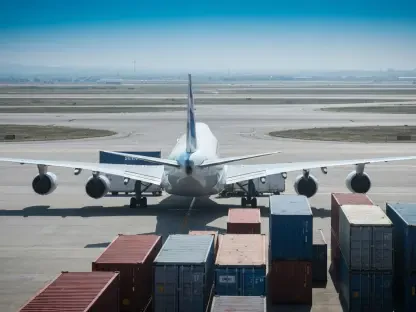Rohit Laila, renowned for his extensive expertise within the logistics industry, joins us today to delve into the intricate dynamics affecting DHL Express Canada. With a keen interest in technological advances and the challenges pertaining to labor disputes, Rohit sheds light on the recent developments that have led to operational suspensions and the broader implications for the supply chain sector in Canada.
What are the main reasons behind the strike by DHL Express Canada employees?
The strike primarily stems from unresolved labor issues related to wages and working conditions, which have become focal points in the ongoing contract negotiations. Employees represented by Unifor initiated the strike following a company-imposed lockout, highlighting tensions and unmet demands that have escalated into this industrial action.
Can you explain the significance of the new Canadian legislation prohibiting the use of replacement workers during strikes?
This legislation marks a significant shift in labor rights within Canada, aiming to strengthen the integrity of collective bargaining. By prohibiting temporary workers during strikes or lockouts, it ensures that employers cannot easily bypass the demands of their striking workforce, thereby potentially affecting business operations during labor disputes.
How has the ban on replacement workers affected DHL Express Canada’s operations?
The inability to deploy replacement workers has constrained DHL Express Canada’s operational capabilities, leading to the temporary suspension of services. It underscores the challenge companies face when navigating labor disputes without the flexibility to maintain service continuity through alternative staffing.
What steps is DHL taking to resolve the labor dispute with Unifor?
DHL is engaged in ongoing contract negotiations with Unifor, focusing on reaching a fair agreement that addresses the union’s key demands. The carrier is attempting to balance operational imperatives with the need to address wage and workplace concerns raised by its employees.
How long have the DHL employees been on strike, and what are their key demands?
Employees have been on strike since June 8. Their primary demands revolve around improvements in wage structures and working conditions, which they believe have not been adequately addressed within the current contractual framework.
What contingency measures had DHL implemented before the suspension of operations?
Prior to suspending operations, DHL Express Canada had implemented a range of contingency measures aimed at minimizing disruptions. These included strategic adjustments in carrier networks to ensure that critical shipments faced limited delays despite the strike.
How is DHL Express Canada dealing with shipments currently in transit?
Shipments that were already in transit but not delivered prior to the suspension are being held within DHL Express’ network. The company plans to process and deliver these packages once operations resume, ensuring continuity for shipments in limbo.
How are shippers adjusting to the suspension of DHL Express services in Canada?
Shippers are rapidly adapting by diversifying their carrier networks, with many turning to FedEx’s international services as viable alternatives to fill the gap left by DHL’s suspended operations. This shift underscores the resilience and adaptability within the logistics industry.
Why did DHL Express request government intervention, and what was the response from Unifor?
DHL Express sought governmental intervention due to concerns that the prohibition on replacement workers would severely impact its operational capabilities. In contrast, Unifor criticized this move, emphasizing the need to respect labor rights and negotiate agreements without governmental interference.
How are other DHL business units affected by the suspension of DHL Express Canada?
Interestingly, the suspension impacts only DHL Express Canada, leaving other units like DHL Global Forwarding and DHL Supply Chain services intact. This distinction allows customers to explore alternative solutions within DHL’s broader operational framework.
Can customers still use alternative DHL services during this suspension period?
Yes, customers may access services offered by other DHL business units that remain operational. However, they are advised to directly communicate with the respective unit to explore service compatibility with their specific shipment needs.
How have businesses like Lulus, Matsukaze, and Olive Young Global adapted to the suspension?
Businesses have ingeniously adapted by rerouting shipments through FedEx’s services to ensure timely delivery to Canadian customers. This proactive approach highlights the dynamic nature of logistics planning amidst unforeseen service disruptions.
What role is FedEx playing as an alternative for shippers impacted by the DHL suspension?
FedEx is playing a key role as a reliable alternative, stepping in to bridge the service gap by offering its international shipping capabilities to Canadian-bound orders. This underscores the collaborative and competitive dynamics within the logistics industry.
How is DHL Express Canada communicating with its customers about the ongoing situation?
DHL Express Canada is maintaining transparency by regularly updating its customers through the company’s website and direct communication channels, ensuring that stakeholders are informed about shipment statuses and operational developments.
How might the resolution of this strike impact DHL Express Canada and its workers in the long run?
Resolving this strike could lead to enhanced relations between DHL and its workforce, fostering a more cooperative environment under restructured contractual terms. Long-term impacts may include improved service delivery owing to greater employee satisfaction and operational stability.









